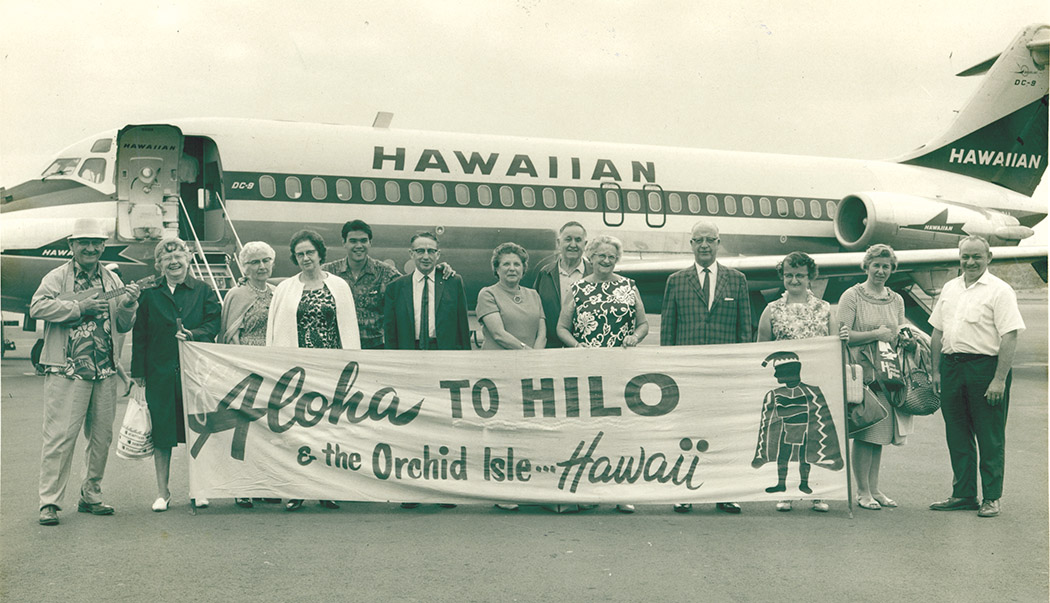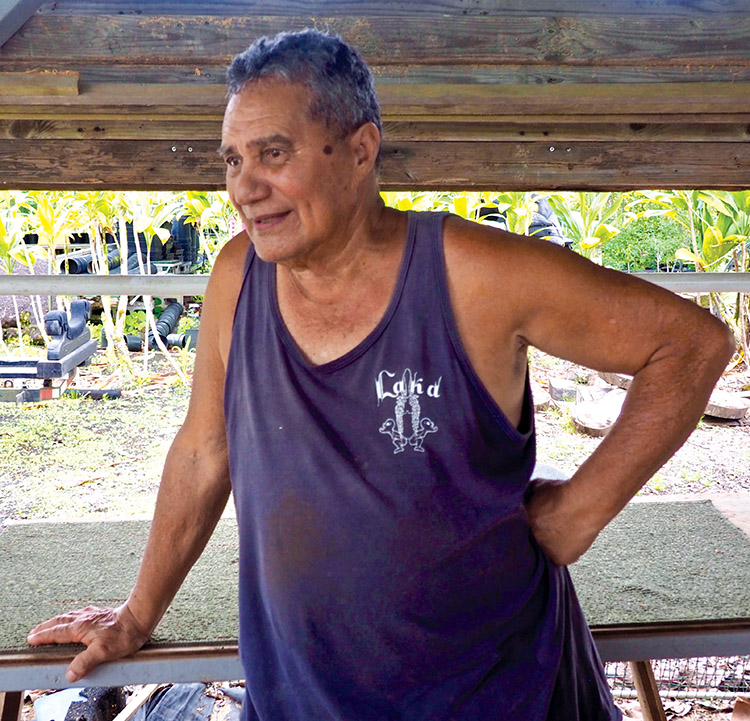
Ray Bumatay: A Canoe Calling

By Brittany P. Anderson
The outrigger canoe is one of the most essential and iconic elements of Hawaiian culture. For centuries, kāhuna kālai wa‘a (master canoe carvers) have been guided by their ‘aumākua (ancestral spirits) who live in the ocean and forests. The ‘aumākua advise the kāhuna during dreams and meditation, showing which tree should be chosen to become a canoe.
Acting on those messages takes incredible skill and practice. Hawai‘i Island canoe carver, Ray Bumatay, honed his skills over a lifetime to become one of the most respected Hawai‘i canoe builders of our time.
Revered for his knowledge and expertise, Ray travels around the world teaching, engaging, and inspiring future generations of canoe builders. With the heart of the ancient kāhuna guiding his hands, he uses modern tools, such as a chainsaw, to artfully hollow out the hull.
A Way of Life
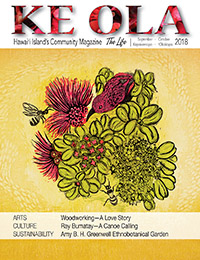
In the Hawaiian culture, the wa‘a (outrigger canoe) represents a link between the spiritual and worldly domains in addition to being incredibly useful. Traditionally, the wa‘a were constructed in different sizes and shapes, depending on use. Smaller canoes served as transportation, taking people quickly around the island; they also provided the ability to fish further from shore.
Longer and larger wa‘a were built for endurance, moving animals and plants as well as people to other islands. Special canoes were crafted for war, while others were built for sport. There are wa‘a kaukahi (single hull) and wa‘a kaulua (double hull), in addition to sailing canoes like Hōkūle‘a.
Making a canoe is a tremendous undertaking. Rituals are performed throughout the process from tree selection to hewing, hauling, finishing, and launching on the first voyage. Each step has a specific and meaningful ceremony that guides the stage.
The Reluctant Expert
Ray was 34 years old when he built his first canoe. Fresh out of the US Army after a tour in Korea, married, and starting a career in construction, he set course on a destined path.
“When I first started out, I heard stories that you can see the canoe in the tree,” he says looking down at his hands. He didn’t fully believe. “I stared at that log for two weeks.” A grin escapes his face as he continues, “I sat down with my six-pack and stared at that log.” Then one day, opening a second beer, he finally saw “a red line straight across. I put my beer down and cut.”
Ray’s grandfather was a canoe builder, the grandson in a long line of kāhuna kālai wa‘a. The carving knowledge was passed down from generations—a résumé that includes working on the unification fleet for Kamehameha I. Ray’s mother was one of five daughters, making him the son his grandfather never had. “He planted the seed, my mother nurtured it.”
Ray’s mother absorbed the teachings of her father and the other kāhuna kālai wa‘a who came to talk story, as elders do. “Whenever I got stuck with the canoe, she would draw in the sand what I needed to do,” he says. “She was listening to the other kālai wa‘a and passed it down to me.”
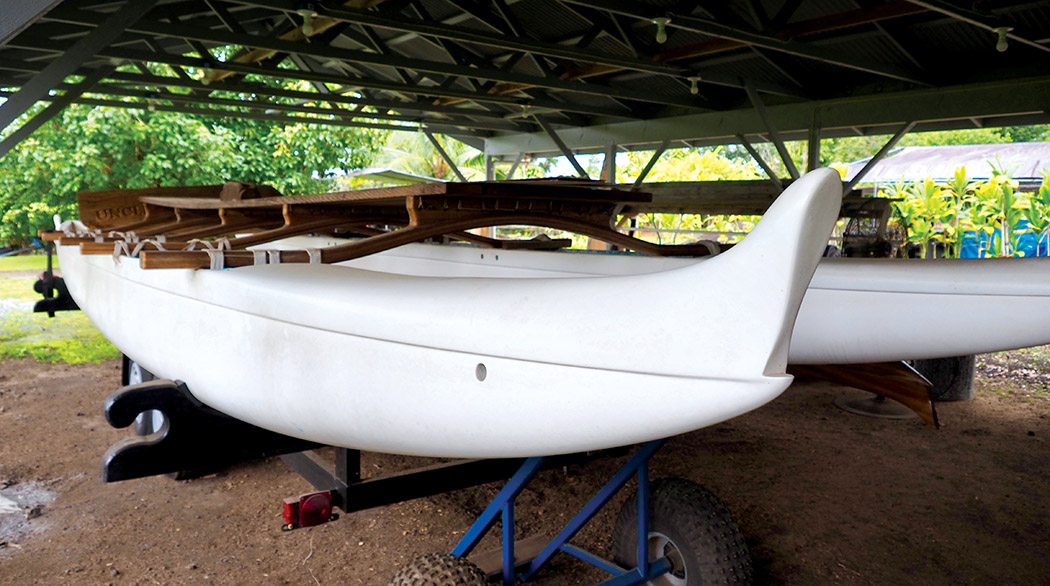
On his first trip to Japan in September of 2016, Ray drew a crowd as he and his assistants wielded chainsaws to cut a rough hull in a felled tree within the forest. A ship building company was just 100 yards away from where Ray was working, and they heard the great Hawaiian canoe builder was in town. The company shut down for the day so the Japanese workers could see the expert at work.
“I’m no expert, I’m just accustomed to the canoe,” he remarks as he shifts his weight almost bashful of the praise. As reluctant as he may be, people across the world including the Smithsonian Institute seek out Ray’s expertise to assist with canoe projects. He holds more weight in being able to share his experience with the world than the titles that come with it.
A Tree Falls
Usually, koa (Acacia koa) trees were used for the hull of the canoe. The mauka (mountain side) forests above Hilo and Kona on Hawai‘i Island and the forests of Hāna, Maui were favored locations for their sturdy tall koa and the ease of bringing the canoes down from the forest to the water’s edge. Through dreams and signs from the ‘aumākua, kāhuna kālai wa‘a understood which tree was suitable for a canoe.
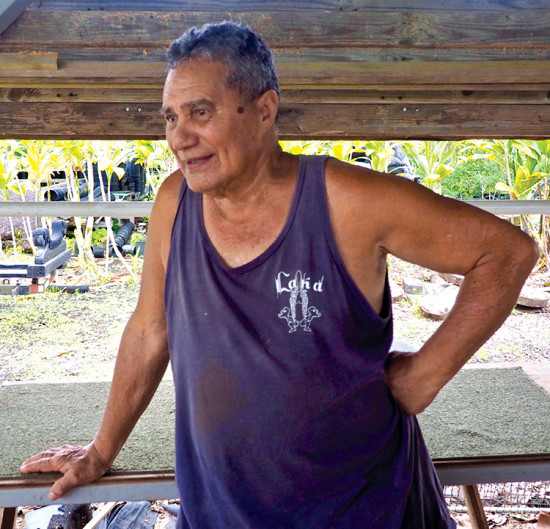
Before felling the tree, offerings were made during a prayer ceremony. A pig was roasted in an imu (underground oven) nearby; some of the pig would be eaten by the kahuna while the rest was given as an offering. Seconds before the giant koa fell, a great silence would come over the kahuna and his assistants. Once toppled, the kahuna performed a ceremony to sever the treetop—a moment of reflection, a time to give thanks and honor the spirit of the tree that was harvested.
Throughout the following days, a rough shaping known as hewing took place to create the bow and stern, letting the tree and the ‘aumākua direct his hands. Once complete, the wa‘a was brought down ceremoniously from the forest to the sea.
The tool used to cut was once a stone adze, ground sharp and tied to a wood handle. It could take up to one week to cut one tree down with the adze. After the tree was felled and ceremonies were performed, bark and branches were stripped for a rough shaping. The basic shape was cut, and the center hollowed to make the heavy koa trunk lighter to transport down the mountain. Ropes were woven and knotted in a specific order, taking great care to not damage the hull. The trunk needed to cure, removing as much moisture from the wood as possible, so the hull could be finished before the seating, ama (outrigger), and ‘iako (boom) are attached. Today trees are harvested with chainsaws or found washed ashore.
The Call of the Canoe
These days, Ray travels mostly with his son, Doug, and occasionally with son, Alika, to events on the mainland and abroad. Ray and Alika recently arrived home from a trip to the Smithsonian Institute in Washington, DC where Ray was consulting on a conundrum the museum had been wrestling with about a canoe building project.
The Smithsonian was gifted a wa‘a by Queen Kapi‘olani in 1887. The Smithsonian Institute and Museum of Natural History now reports they believe it is the oldest existing Hawaiian canoe of its kind in the world. The museum had several pieces they believed belonged to the canoe but they were unable to fully piece it together. Ray and Alika bestowed a maile lei on the wa‘a, reminding her of the land whence she came. As Ray placed the lei on her he felt something unsettling: the canoe was crying out in pain. She was missing something to make her whole.
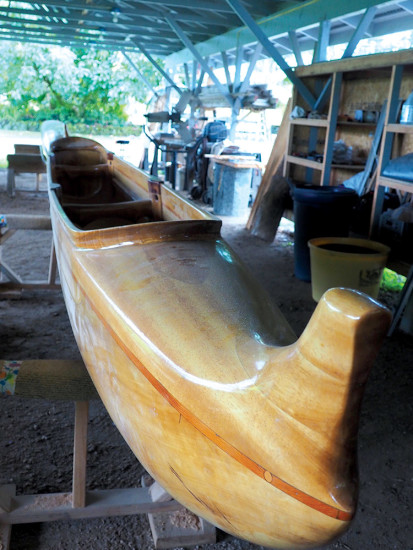
Ray and Alika were led by the curator to the pieces the museum had been unable to make sense of since their arrival. Amongst the resident experts, curator, and historians, it was two men from Hilo who solved the age-old mystery. “Alika told them, they [the pieces] were used to stabilize the canoe during transport [to the Smithsonian], the extra pieces didn’t belong to the canoe at all,” Ray beams retelling the story fresh on his mind.
However, there was still something missing that the “oldest existing wa‘a” was yearning for. Ray looked around the canoe’s display. “She was missing a paddle,” Ray’s voice went quiet as he spoke. Alika called Doug who was back at home on Hawai‘i Island. The perfect paddle, one of several Ray had made, was sitting in his makeshift storage room attached to their home in Pana‘ewa. Doug packaged the paddle and shipped it to Ray in Washington DC where it was given to the wa‘a. “And then when I touched her,” Ray says closing his eyes, “she felt right.”
It wasn’t the first time a canoe spoke to Ray, and it won’t be the last. In high demand, Ray teaches canoe building to anyone willing to put in the work, as long as he has a canoe in progress. His method is simple: watch to learn the technique then go do it. Working side-by-side on their own canoes, Ray’s oversized workshop houses wa‘a in various stages of progress.
At 15 years old, Ray paddled in a canoe club and vowed to himself that one day, when he got the chance, he would build himself a koa canoe. Never would he have imagined what would come next after building that first wa‘a. “I wanted to come back to Hawai‘i Island. I wanted kids, and teach them my Hawai‘i, my forest, my ocean.”
The next stop for Ray is Japan, where he defies the odds– building a fleet of canoes over the years from salvaged logs for those Japanese citizens aching to paddle. Then he moves on to New Zealand to carve a canoe for a celebration, and from there wherever he hears a canoe calling out for him. ❖
All photos by Brittany P. Anderson
Mahalo Kings’ Shops – Culture Story Sponsor
